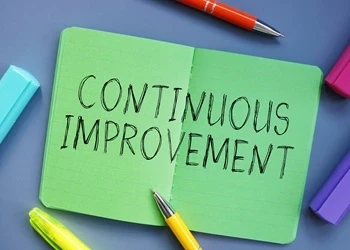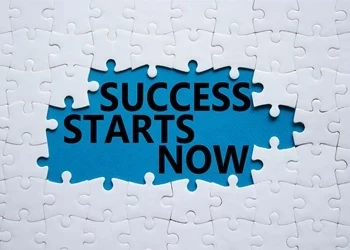Charting a course to continuous improvement
Investing in a platform and culture that enables collaboration is the right path to take to continuous improvement
Add bookmark
How can modern enterprises charter a route to continuous improvement? GPS and map apps have come a long way, but I find I’m still not entirely comfortable relying solely on them to get me somewhere when I’m driving. While they’re pretty efficient and highly informative, they’ll still suggest some routes that I know don’t make sense.
There will be a turn across traffic into a busy road that I know is a nightmare, or the use of a side road that is so choked with parked cars it feels like a puzzle to navigate against oncoming traffic. It may make sense to the app, but it’s just not practical for me as the driver so sometimes I’ll go off script and let my phone figure out what to do about it. Sure enough, it will reroute from my detour and I’ll still get where I’m meant to be, and I’ll probably be a little less stressed on arrival as a result.
I’ve found that this constant conversation between what works best for me as a driver and what the app knows is true as an analytical tool is the best way to navigate, and the more I talk with organizations wrestling with their process excellence journey, the more I see it as being the best way to navigate continuous improvement, too. Often there is a tension between the process experts who are trying to chart the best way forward for operations and the frontline teams of subject matter experts who have to implement those ideas in the day-to-day practices of the business, but it doesn’t have to be that way.
Process experts and frontline teams in continuous improvement
Process experts and business analysts are essential to the smooth running of an organization because they have a perspective that takes into account the big picture. Theirs is the language of compliance and standardization, a viewpoint built on operational alignment. They are looking for efficiencies, examining systems, rolling out tools and calculating risks. They’re your organizational GPS, charting the most effective course for the business.
However, if you only pay attention to their input, there’s a very real possibility of introducing impractical approaches, or the processes they come up with not being implemented properly.
From the other side, your frontline teams offer a different value proposition. These are your subject matter experts, your veteran operators who know their systems and procedures inside-out. They speak the language of efficient workarounds, of creative solutions and practical outcomes. They’re the drivers who are delivering value to your customers every day. Unfortunately, if left to their own devices, they can take some less than ideal detours, leading to compliance issues and inconsistent results. You may end up with very different outcomes across departments because of entirely different approaches that they’ve adopted internally.
This is why there needs to be a conversation going on between these two groups.
Register for All Access: BPM Business Process Management 2025!
Sharing information and discussing new ways of working
When I say ‘conversation’ I don’t just mean informal communication either. For continuous improvement to be effective there needs to be a number of structures and systems in place to support and enable it. It starts with a robust process platform that provides the tools to facilitate a dialogue between process experts and practitioners. That platform needs to support clear and accessible process modeling tools that allow business analysts to visualize operations at varying levels and depths, while supporting users who need practical guides and documentation on hand for day-to-day activity.
There need to be effective feedback loops built into the system to capture ideas from the frontline staff and insights from the process team, providing a forum for sharing information and discussing new ways of working. It also needs to tie into compliance frameworks to adequately manage risk through good governance and clear accountability structures.
With the right tools in hand, the conversation is definitely easier, but it’s still an intentional, cultural decision that the business needs to make. That can be facilitated by holding process discovery workshops and collaborative design sessions, bringing the various groups to the table to begin the dialogue about how to best achieve your customer outcomes.
Process forums and transparent feedback build the trust necessary for open and creative discussion, allowing all stakeholders to feel empowered to be involved. Having a culture of collaboration opens the door for ideas to flow from the frontline and good governance and compliance to carry from the process group.
With only the GPS of business analysts to rely on, you risk navigating some theoretical paths that might turn out to be less than ideal. On paper they make sense, but they just don’t work out how you thought they would.
However, just letting your driver make it up as they go along risks getting lost as they choose routes that suit them rather than your intended goals. The two need to be in constant, cooperative conversation. It’s never necessary to choose between structured oversight and practical insights when you can enable both through good collaboration. Investing in a platform and a culture where those conversations can happen, and keep happening, is the right path to take to continuous improvement.













